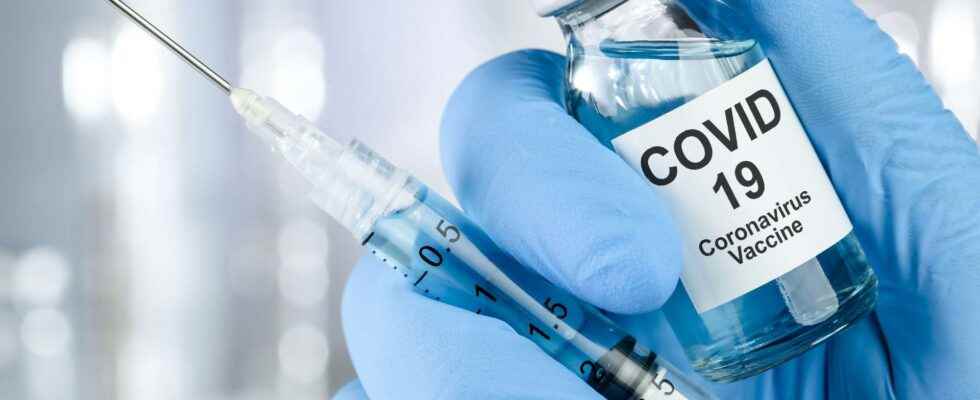Only Pfizer and Moderna mRNA vaccines can be used as a booster dose. An English study looked at six other vaccines and determined the tolerance and immunogenicity of several combinations.
You will also be interested
[EN VIDÉO] Vaccines and side effects: should we be concerned? Like all medicines, vaccines can cause side effects. Where do they come from and are they common?
The fifth wave of the’epidemic of Covid-19 swept over France. The number of positive cases has increased dramatically since mid-November 2021, and hospitals are starting to have their feet in the water. Critical care admissions and hospital deaths due to Covid-19 are soaring: +44 and 35% respectively compared to the week of November 29, 2021.
Another wave is also breaking, that of vaccination. Most of the doses injected over the past few days are booster doses, accessible to all adults who have had a full vaccination schedule at least five months earlier. Alone mRNA vaccines, Pfizer for all or Moderna for those 30 and over, can be injected after a primary vaccination. Others vaccines are, to date, excluded from the recall campaign.
Another formula than that of Pfizer and Moderna as a reminder?
Little data exists on the safety and immunogenicity of other licensed vaccines when given as a booster. In England, the task force vaccine and National Institute for Health Research (NIHR) are at the origin of a randomized double-blind study, called Covboost, which aims to estimate the tolerance and immunogenicity of six anti-Covid-19 vaccines, administered after two doses of the Pfizer vaccine or from AstraZeneca. The vaccines involved are: Pfizer, Moderna, AstraZeneca, Novavax (full or half dose), Valneva (full or half dose), Janssen, and Curevac. The interim results of this study, which is in phase 2, have just been published inThe Lancet.
Data shows all seven vaccines are safe as a third dose
“The side effect data shows that all 7 vaccines are safe as a third dose, with acceptable levels of inflammatory side effects, such as pains at the injection site, muscle pain and fatigue. While all of them increase immunity against protein S after two doses of the AstraZeneca vaccine, only AstraZeneca, Pfizer, Moderna, Novavax, Janssen and Curevac also do so after two doses of Pfizer ”, summarizes Professor Saul Faust, principal investigator of this clinical trial and director of the NIHR Research Facility at Southampton University Hospital.
The clinical trial was conducted between 1er and on June 30, 2021, with 2,878 adults over 30 years of age who received two doses of AstraZeneca or Pfizer vaccine at least 70 and 84 days before the start of the protocol respectively. In the 18 sites involved, the participants were separated into three groups:
- Group A: booster of Novavax (full dose) or Novavax (half-dose) or Astrazeneca;
- Group B: booster of Pfizer (full dose) or Valneva (full dose) or Valneva (half-dose) or Janssen;
- Group C: booster of Pfizer (half-dose) or Curevac or Moderna.
For each combination, the two main objectives were to monitor side effects and anti-S protein antibody concentration 28 days after injection. Secondly, the scientists estimated the neutralizing capacity of the antibodies and the stimulation cellular immunity in vitro. Here, the aim was not to determine the effectiveness of each vaccine as a reminder on infection and hospitalizations.
Reminders well tolerated whatever the formula
Overall, the booster dose is well tolerated regardless of the formula used. There are still some combinations that are more reactogenic than others. More people vaccinated with AstraZeneca and who received Moderna’s formula were more likely to report general fatigue. For those first vaccinated with Pfizer and who received Moderna as a booster, they also reported more side effects.
The combination of Pfizer and Janssen causes general fatigue and chills more frequently than others. A third dose of AstraZeneca after a primary Pfizer vaccination is also associated with a little more discomfort. These side effects are not abnormal after vaccination and are more often experienced by young people than elderly people. Of the 1,036 reported side effects, 24 were considered severe and 6 potentially related to vaccines.
Revive anti-protein S antibodies
The mean anti-protein S antibody titre is 1.8 times, for people who received the half-dose of Valneva, to 32.3 times, for people who received Moderna, after only two doses of AstraZeneca . These titers are 1.3 times, for the half-dose of Valneva, to 11.5 times, for a dose of Moderna, greater than after a primary vaccination with Pfizer. Cellular immunity is also enhanced by booster doses, but less dramatically. Moderna’s formula seems to be the most effective on this point, while a booster of AstraZeneca when the primary vaccination has already been with this same vaccine has little effect. Valneva’s vaccine fails to awaken cellular immunity in people first vaccinated with Pfizer. These results vary a lot from person to person.
This news is encouraging and could provide flexibility in recall campaigns. Currently, Pfizer’s formula is the most requested, not least because it is the best known to the general public and one of the first to be authorized. The results presented here show that it is also the most effective in reviving anti-protein S antibodies. But the other vaccine formulas do not present any more risks and could make it possible to reduce the pressure vaccine inquiries from Pfizer and Moderna.
Interested in what you just read?
.
fs6
